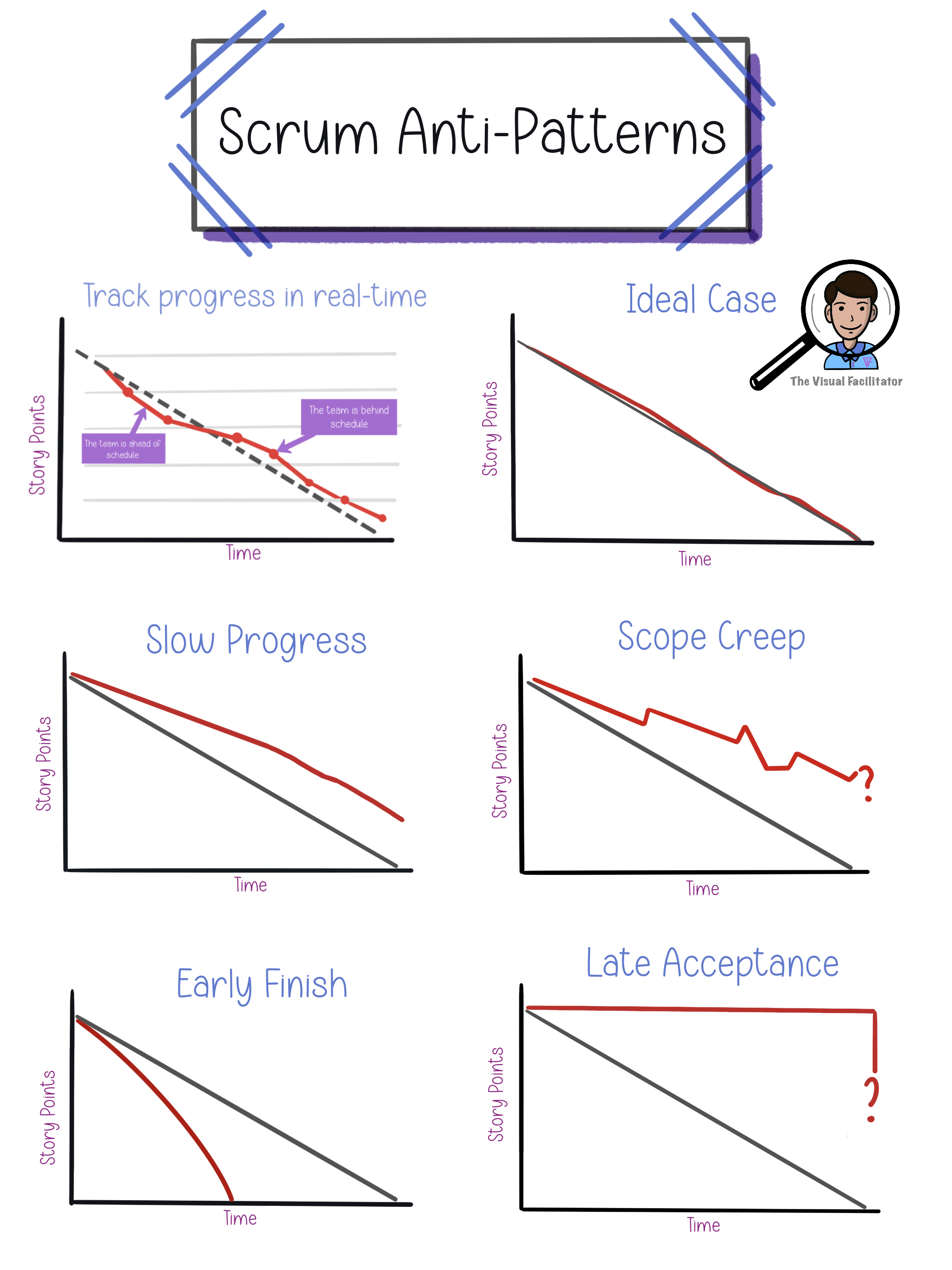Uncovering Scrum Anti-Patterns with Burn-Down Charts
If you're part of a Scrum team, you're likely no stranger to burn-down charts. They've become a go-to tool for keeping everyone in the loop about whether your sprint goal is on track. Critics might argue that a good Scrum team should have an intuitive sense of their progress, but burn-down charts can provide an extra layer of clarity. Today, we're going to look at another benefit of these simple charts: they can unveil hidden anti-patterns that might be derailing your Scrum journey.
Late Acceptance: The waiting game. Sometimes, the product owner holds off on accepting or rejecting tasks until the eleventh hour. This can happen for various reasons, such as a lack of clear priorities or incomplete understanding of the tasks.
Slow Progress: When your chart stubbornly hovers above the line of expected progress for the entire sprint, you've got a problem. Slow progress might stem from issues like unclear requirements, roadblocks, or even lack of team motivation.
Scope Increase: The never-ending story. As the sprint rolls on, the scope of work starts to creep up. Most of the time, it's due to inadequate preparation. That can be caused by changing requirements, overlooked details, or insufficient planning.
Early Finish: This one seems like the dream scenario, right? Not always. An early finish might indicate that your team has figured out a way to do tasks with much less effort or that your sprint goal was set too low. It could also hint at problems, like inconsistent estimates or a lack of challenge for the team.
Now, here's why these patterns matter. Burn-down charts can help you pinpoint these issues, and fixing them can lead to smoother sprints and more predictable results. You don't need to switch to complex story points; you can count equally-sized stories and use them as your reference.
To make burn-down charts even more insightful, consider adding extra data like context, lead time, cycle time, and other relevant information. This can give you a deeper understanding of your team's performance and help you address any systemic dysfunctions.
A practical tip: Make updating the burn-down chart a team exercise. It shouldn't be solely the scrum master's responsibility. Rotate team members to keep it fresh and collaborative.
One crucial piece of advice: Resist the urge to count subtasks. This practice can lead you down a path of abandoning your definition of done and marking tasks as 90% complete, which isn't ideal. We want to avoid falling into the cargo cult agile trap and stay true to the Scrum principles.
In conclusion: Burn-down charts 🔥📉 are valuable tools for your Scrum journey. They not only help you track progress but also reveal hidden anti-patterns that could be holding your team back. By using burn-down charts effectively and supplementing them with relevant data, you can improve your Scrum practices and achieve more successful sprints.
“Thanks for the agile session, enjoyed that and was good to think about the nuance”

